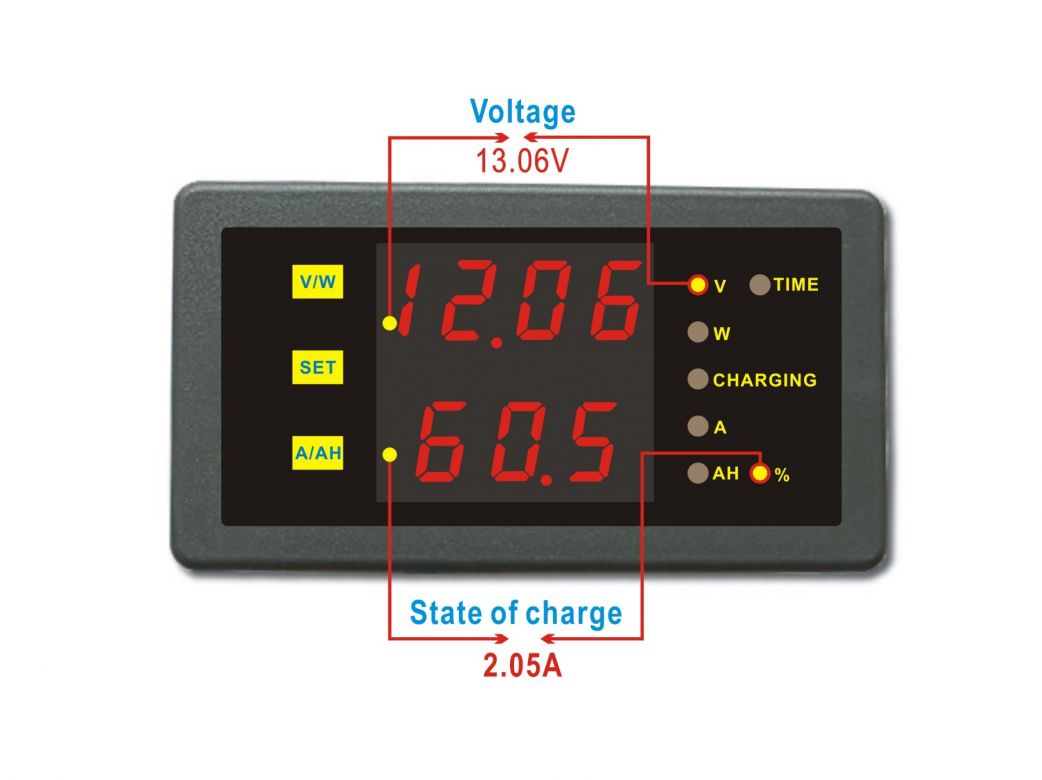Halfords had a good sale on a 110 Ah leisure battery for less than £100. But I found the XV190MF at Tayna: https://www.tayna.co.uk/XV190MF-Powerline-Leisure-Battery-P8959.html nominal a 110Ah battery, with a slightly reduced capacity depending on the current drawn. The argument for this battery was the price: only £43, which I found reasonable. Maybe in a few months I add another identical battery to boost the overall capacity.
Then I got a few wires, cables, and the important volt/ampere meter: http://www.ebay.co.uk/itm/152102998570?_trksid=p2057872.m2749.l2649&ssPageName=STRK%3AMEBIDX%3AIT on eBay, sent directly from China. I already had used this device before, and it is great because it goes simply between the battery and the consumers resp vehicle electrics, without the need for a separate resistor to measure current. Also this device shows current in both directions, so I can monitor if the battery is getting charged or is getting depleted.
I got a three-for-price-of-two deal, which means this device costs just £10. I am not using it to monitor Ah, but directly the flowing current in Ampere.
The wiring up meant I needed to get somewhere the +12V from the vehicle electric system, which would then be connected via the split charge relay TEC3M (costs around £11) to the leisure battery. I took the +12V from the cigarette lighter: at least this line usually can provide up to 20A, and it was the only line which I could easily reach. The leisure battery will then be charged from the vehicle electric system, when the engine is running and the vehicle voltage is above 14V, generated by the alternator. I like these inexpensive TEC3M relays: they can switch up to 30A, and they provide an additional contact for "fridge", which I use to connect an LED which lits up when the relay connects both batteries.
I added a circuit breaker in that power connection, which I also use as a switch to disconnect both batteries, if I want to. I used a 60A circuit breaker http://www.ebay.co.uk/itm/181592244962?_trksid=p2057872.m2749.l2649&ssPageName=STRK%3AMEBIDX%3AIT - in my experience the actual current flowing between the batteries is usually not more than 5Ampere.
I put the leisure battery in a battery enclosure which I still had left over from my previous campervan work. It now stands under the rear seat. Will need to be more rigidly affixed to the vehicle, but for now it is OK. It is so heavy that it usually does not slide around.
Now I can begin wiring up more of the electric circuits in the vehicle which will be powered by the leisure battery, for example additional LED lamps.
 |
| Leisure battery behind one the passenger seat row. The wiring already includes the volt-/amperemeter. |
 |
| Wiring is at the moment only loose, in a cardboard box. Here is the TEC3M relay wired up. |

No comments:
Post a Comment